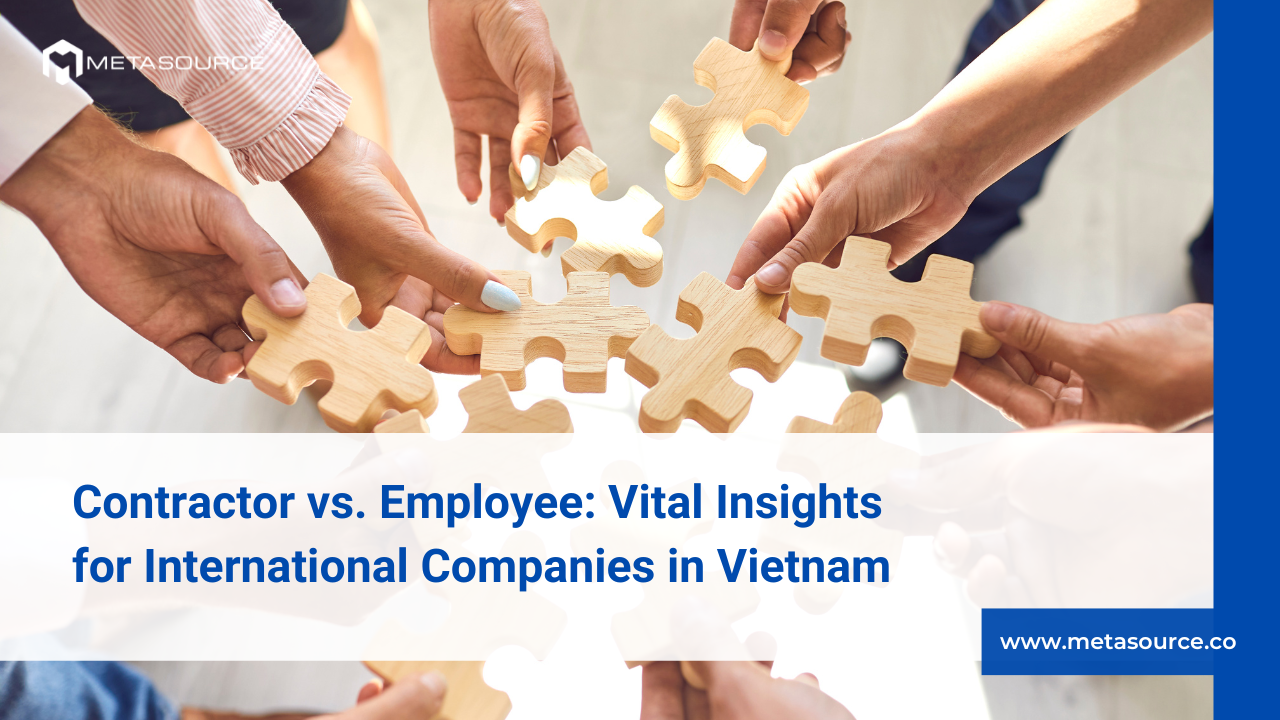For international companies venturing into the Vietnamese market, understanding the differences between contractors and employees is not just a matter of business strategy; it’s a legal necessity. Misclassification can lead to misunderstandings and, more importantly, government penalties. This article explores these distinctions to help international firms navigate the Vietnamese labor landscape effectively.
1. What is an Employer and Independence Contractor?
An employer, as defined by Vietnamese labor law, refers to an individual or entity that hires workers to perform specific tasks or duties within the framework of an employment contract. Employers are responsible for providing a safe working environment, adhering to labor regulations, and ensuring the well-being of their employees.
In contrast, a contractor, often referred to as an independent contractor or freelancer, is an individual or business entity that offers specialized services to clients under a contract. Unlike employees, contractors are not typically subject to the same level of supervision and control by the hiring party, and they operate with a higher degree of autonomy.
2. The Differences Between Contractor and Employee
2.1 Business Relationship
Employer-Employee Relationship: Employees have a long-term, often indefinite, relationship with their employers. They are integrated into the company’s daily operations and follow its guidelines and policies.
Contractor Relationship: Contractors are engaged for specific projects or tasks with a defined scope and duration. They maintain a more arms-length relationship with the hiring party, focusing on project completion rather than company integration.
2.2 Total Compensation
Employer-Employee Relationship: Employees typically receive a fixed salary or hourly wage, along with benefits such as health insurance, paid leave, and bonuses.
Contractor Relationship: Contractors negotiate their fees on a project-by-project basis and are responsible for their benefits, taxes, and expenses. They may charge higher rates to account for these additional costs.
2.3 Employer Supervision and Control
Employer-Employee Relationship: Employers have a significant level of control over their employees, dictating work hours, tasks, and methodologies. They may provide training and equipment for the job.
Contractor Relationship: Contractors have more autonomy, deciding when, where, and how they complete their work. The hiring party may specify the project’s outcome but leave the details to the contractor.
2.4 Work Schedule and Location
Employer-Employee Relationship: Employees generally work at the company’s designated location during specified hours.
Contractor Relationship: Contractors often have flexibility in choosing their work hours and location, as long as they meet project deadlines and deliverables.
2.5 Employment Law and Employee Benefits
Employer-Employee Relationship: Employers are obligated to comply with Vietnamese labor laws, including providing social insurance, paid leave, and adhering to minimum wage regulations. Employees also have access to labor protections.
Contractor Relationship: Contractors are responsible for their own legal compliance, tax payments, and social insurance contributions. They do not receive the same employment benefits and protections as employees.
In conclusion, understanding the distinctions between contractors and employees is vital for both employers and workers in Vietnam. Ensuring compliance with Vietnamese labor laws is essential to avoid legal issues and protect the rights of all parties involved in these two distinct work arrangements. It is advisable to seek legal advice or consult Vietnamese labor authorities for specific cases and regulations.
Read more: Navigating the Complexities of Obtaining a Working Permit in Vietnam
Read more: How To Register A Limited Liability Company In Vietnam A Quick Guide
Discover more tips to help boost your business further in Vietnam by following us on our website and Linkedln page


